Italy Tours
Walk the Amalfi coast, discover Sicily's ancient ruins and cycle through vineyards in Tuscany
Popular tours
- Save10%
 View Tour
View TourExploring the Amalfi Coast - 7 Days
- Naples to Naples
- Age group: 12 - 100
- Max group size: 16
Was:£1,479From£1,324 - Save13%
 View Tour
View TourRome, Florence & Venice - 8 Days
- Rome to Rome
- Age group: 0 - 99
- Max group size: 50
Was:£1,665From£1,455 - Save17%
 View Tour
View TourParis to Rome: Picnics & Pizza - 7 Days
- Paris to Rome
- Age group: 18 - 39
- Max group size: 16
Was:£1,399From£1,155 - Save25%
 View Tour
View TourLocal Living Italy—Amalfi Coast Winter - 7 Days
- Naples to Naples
- Age group: 12 - 100
- Max group size: 16
Was:£1,429From£1,066 - Save21%
 View Tour
View TourBest of Italy - 14 Days
- Rome to Venice
- Age group: 15 - 99
- Max group size: 12
Was:£3,360From£2,661 - Save21%
 View Tour
View TourHighlights of Italy - 8 Days
- Venice to Rome
- Age group: 15 - 99
- Max group size: 16
Was:£1,455From£1,152
Italy Tours
Welcome to Italy, a country that captures the essence of romance, history, and breathtaking beauty. Embark on an unforgettable journey with our Italy tours and holidays, designed to immerse you in the enchanting allure of this Mediterranean gem. From the ancient ruins of Rome to the sun-kissed coasts of the Amalfi, from the Renaissance treasures of Florence to the canal-lined streets of Venice, Italy offers a tapestry of experiences that will leave you spellbound.
Italy is a country that pulsates with life, exuding a vibrant energy that seamlessly blends the old with the new. It is a land of contrasts, where ancient ruins stand alongside modern architecture, and where art, fashion, and gastronomy thrive in perfect harmony. As you traverse its diverse regions, you'll encounter a myriad of cultural treasures and iconic landmarks that have shaped history and captivated the world.
Begin your journey in Rome, the eternal city that effortlessly blends the grandeur of the past with the pulse of the present. Explore the awe-inspiring Colosseum, wander through the Roman Forum, and toss a coin into the Trevi Fountain for good luck. Marvel at the artistry of Michelangelo's Sistine Chapel in Vatican City, a sovereign state within Rome, and immerse yourself in the spiritual aura of St. Peter's Basilica.
Continue your adventure to Florence, the birthplace of the Renaissance, where the legacy of great artists such as Leonardo da Vinci and Michelangelo permeates the city's museums, galleries, and streets. Admire the iconic Duomo, wander through the historic center, and revel in the beauty of the Uffizi Gallery, home to masterpieces like Botticelli's "The Birth of Venus."
No visit to Italy is complete without experiencing the captivating charm of Venice. Embark on a gondola ride along its enchanting canals, traverse the iconic Rialto Bridge, and wander through the labyrinthine streets of this floating city. Lose yourself in the romantic ambiance, as Venetian masks, exquisite glassware, and tantalizing cicchetti beckon from every corner.
As you venture south, the picturesque landscapes of Tuscany and the Amalfi Coast await. Marvel at the rolling vineyards and medieval towns of Tuscany, where the famous Chianti wine flows freely and culinary delights abound. Indulge in delectable Tuscan cuisine, sip world-class wines, and immerse yourself in the idyllic countryside.
On the Amalfi Coast, discover a paradise where turquoise waters meet rugged cliffs adorned with colorful villages. Visit the charming town of Positano, with its pastel-hued houses cascading down the cliffs, or explore the historic ruins of Pompeii, frozen in time by the eruption of Mount Vesuvius.
Italy is also a gastronomic haven, where every bite is a revelation. Indulge in traditional Italian pasta dishes, savor the creamy gelato, and sample the finest wines from vineyards that have been producing nectar for centuries. From the aromatic truffles of Piedmont to the fresh seafood of Sicily, Italian cuisine is a celebration of flavors that will tantalize your taste buds.
Immerse yourself in the cultural tapestry of Italy, where art, history, and natural beauty converge. Lose yourself in the narrow streets of ancient towns, bask in the golden glow of sunset over the Tuscan countryside, and let the melodic sounds of Italian opera transport you to another world. With our Italy tours and holidays, you'll experience the timeless allure of a country that has inspired poets, artists, and dreamers for centuries.
Uncover the magic of Italy with us, where each step reveals a new chapter in an unforgettable story. Let us guide you through this land of passion, where history, art, and beauty intertwine to create an experience that will leave an indelible mark on your soul. Embark on an Italy tour or holiday and discover the enchantment of this extraordinary country.
When is the best time to visit Italy?
The best time to visit Italy depends on your preferences and the experiences you're seeking. Italy has a diverse climate, with regional variations, so the ideal time to visit may vary based on the specific cities or regions you plan to explore. Here's a breakdown of the different seasons in Italy:
Spring (April to June): Spring is generally a delightful time to visit Italy. The weather is mild and pleasant, with blooming flowers and lush landscapes. The crowds are relatively smaller compared to the peak summer season, making it an excellent time for sightseeing and exploring popular attractions. However, keep in mind that April and May can still have occasional rain showers.
Summer (June to August): The summer months bring warm weather, longer days, and a lively atmosphere throughout Italy. This is the peak tourist season, particularly in popular destinations like Rome, Florence, and the coastal areas. It's the perfect time for beach holidays and outdoor activities. However, be prepared for larger crowds, higher prices, and hotter temperatures, especially in southern Italy.
Autumn (September to October): Autumn in Italy offers pleasant weather with cooler temperatures, making it an excellent time to visit. The summer crowds start to dwindle, and you can still enjoy sunny days and explore the historical sites, cultural events, and culinary delights. The autumn foliage in regions like Tuscany and Umbria adds a stunning touch to the landscapes.
Winter (November to February): Winter in Italy is generally milder in the southern regions, while the northern parts and mountainous areas experience colder temperatures and even snowfall. It's a great time to visit if you want to experience fewer crowds, enjoy winter sports in the Italian Alps, or explore cities like Rome and Florence with a quieter ambiance. Winter is also the time for festive markets and cultural events, especially in December for Christmas celebrations.
Keep in mind that weather patterns can vary, and it's always advisable to check the specific climate of the regions you plan to visit. Additionally, popular tourist destinations tend to be busier during weekends and holiday periods regardless of the season. It's a good idea to plan and book accommodations and attractions in advance, especially if you're traveling during peak seasons.
Do I need a visa to visit Italy?
The visa requirements for visiting Italy depend on your nationality and the purpose and duration of your stay. Here are some general guidelines:
European Union (EU) Citizens: Citizens of EU member countries do not need a visa to enter or stay in Italy. They have the right to travel freely within the Schengen Area, which includes Italy, for stays up to 90 days.
Non-EU Citizens: If you are not a citizen of an EU country, you may need a visa to enter Italy. The specific visa requirements vary depending on your nationality, so it's essential to check with the Italian embassy or consulate in your country or the relevant visa authorities for the most accurate and up-to-date information.
Schengen Visa: Italy is part of the Schengen Area, which comprises 26 European countries with a common visa policy. If you are a citizen of a country that is not exempt from the Schengen visa requirement, you will generally need to apply for a Schengen visa. This visa allows you to visit Italy and other Schengen countries for tourism or business purposes for a maximum of 90 days within a 180-day period.
Visa Exemptions: Some nationalities are exempt from the Schengen visa requirement for short-term visits. Citizens of certain countries, such as the United States, Canada, Australia, New Zealand, Japan, South Korea, and many others, can enter Italy and stay for up to 90 days within a 180-day period without a visa. However, it's important to note that the purpose of the visit should be tourism, business, or other activities that do not involve work or study.
Long-Term Visits: If you plan to stay in Italy for more than 90 days, whether for work, study, or other purposes, you will generally need to apply for a long-term visa or a residence permit. The specific requirements and application process will depend on the purpose of your stay.
It's crucial to check the visa requirements well in advance of your planned trip and allow sufficient time for the visa application process. It's recommended to consult the official website of the Italian embassy or consulate in your country or contact the relevant visa authorities for the most accurate and up-to-date information regarding visa requirements and application procedures.
What are the must see places in Italy?
Italy is a treasure trove of captivating destinations, offering a rich blend of historical sites, cultural landmarks, breathtaking landscapes, and culinary delights. While the list of must-see places in Italy is extensive, here are some top recommendations:
Rome: The eternal city of Rome boasts iconic landmarks such as the Colosseum, Roman Forum, Vatican City (including St. Peter's Basilica and the Sistine Chapel), and the Pantheon. Don't miss the chance to toss a coin into the Trevi Fountain for good luck.
Florence: Known as the birthplace of the Renaissance, Florence is a haven for art and architecture enthusiasts. The city showcases masterpieces like Michelangelo's David at the Galleria dell'Accademia and Botticelli's The Birth of Venus at the Uffizi Gallery. The Florence Cathedral (Duomo) and Ponte Vecchio are also must-visit attractions.
Venice: Venice, renowned for its canals and romantic ambiance, offers unique experiences. Explore St. Mark's Square, take a gondola ride along the Grand Canal, and visit the stunning St. Mark's Basilica and the Doge's Palace. Don't forget to wander through the charming narrow streets and enjoy Venetian cuisine.
Amalfi Coast: The Amalfi Coast is a picturesque stretch of coastline dotted with colorful cliffside towns. The town of Amalfi itself, as well as Positano and Ravello, are highlights. Enjoy stunning views, relax on pebbly beaches, and savor fresh seafood while exploring this enchanting region.
Tuscany: Tuscany is synonymous with rolling hills, vineyards, and charming medieval towns. Florence, mentioned earlier, is the region's gem, but also explore the enchanting countryside with destinations like Siena, San Gimignano, and the Val d'Orcia, famous for its scenic landscapes.
Cinque Terre: Located on the Italian Riviera, the five villages of Cinque Terre (Riomaggiore, Manarola, Corniglia, Vernazza, and Monterosso) are a UNESCO World Heritage Site. The colorful houses perched on cliffs overlooking the turquoise sea create an unforgettable setting.
Pompeii and Herculaneum: Step back in time with a visit to the ancient Roman cities of Pompeii and Herculaneum, both buried by the eruption of Mount Vesuvius in 79 AD. Explore the remarkably preserved ruins, including well-preserved houses, baths, and theaters.
Sicily: Italy's largest island, Sicily, offers a captivating blend of history, culture, and stunning landscapes. Explore the ancient ruins of the Valley of the Temples in Agrigento, visit the enchanting town of Taormina, and savor the island's unique cuisine.
These are just a few highlights, and Italy has much more to offer, including the cities of Milan and Naples, the beautiful lakes region, the historical city of Verona, the stunning Dolomites, and the charming regions of Umbria and Puglia. Each region has its own unique attractions and experiences, so be sure to plan your itinerary based on your interests and the time you have available.
Can you tell me more about the walking tours?
Italy is a fantastic destination for our guided walking holidays, offering a perfect blend of stunning landscapes, rich history, and delicious cuisine. Here are some reasons why Italy is an excellent choice for guided walking tours:
Scenic Beauty: From the rolling hills of Tuscany to the dramatic cliffs of the Amalfi Coast and the breathtaking Dolomites, Italy boasts diverse and picturesque landscapes. Guided walking tours allow you to explore these scenic wonders on foot, immersing yourself in the beauty of the countryside, vineyards, coastal paths, and charming villages.
Rich History and Culture: Italy is a treasure trove of history, art, and culture. A guided walking holiday provides the opportunity to discover ancient ruins, medieval towns, Renaissance architecture, and iconic landmarks. Expert guides can offer fascinating insights into Italy's history, legends, and local traditions, enhancing your understanding and appreciation of the places you visit.
Culinary Delights: Italian cuisine is renowned worldwide, and guided walking tours often incorporate culinary experiences. You can savor authentic local dishes, visit wineries, taste olive oils, and indulge in regional specialties. The combination of walking and gastronomy creates a truly immersive and memorable experience.
Expert Guidance: Guided walking tours provide knowledgeable guides who are passionate about Italy and its hidden gems. They can offer valuable insights, share interesting stories, and take you off the beaten path to discover lesser-known destinations and local secrets. Their expertise ensures a well-planned itinerary, assistance with navigation, and access to insider knowledge.
Camaraderie and Group Atmosphere: Joining a guided walking holiday allows you to connect with like-minded travelers who share a love for exploration, nature, and culture. The group atmosphere creates opportunities for camaraderie, new friendships, and shared experiences, adding a social element to your journey.
Safety and Convenience: Guided walking holidays provide a level of comfort and convenience. You can rely on professional guides who ensure your safety during the walks, handle logistics, and provide support along the way. They select the best routes, arrange accommodations, and take care of transportation, allowing you to focus on enjoying the experience.
Whether you choose to walk the picturesque hills of Tuscany, the charming villages of Cinque Terre, or the rugged trails of the Dolomites, a guided walking holiday in Italy offers a unique and enriching experience. It combines the pleasures of walking amidst beautiful scenery, immersing yourself in history and culture, savouring delicious food and wine, and creating lasting memories.
The walking and trekking holidays cater for all abilities and levels of fitness which is depicted by the 'Physical Rating' each tour is scored on, 1 being the easiest and 5 the most challenging. Please contact our team if you'd like to find out more.
How fit do I need to be to walk the Amalfi coast?
Walking the Amalfi Coast can be a rewarding experience, but it does require a certain level of fitness. The difficulty of the walk will vary depending on the specific trails and routes you choose. The tours we feature are designed for pretty much anyone of average fitness.
As well as your personal fitness level. Here are some factors to consider:
Terrain: The Amalfi Coast is characterised by steep hills, rugged cliffs, and narrow pathways. Some sections of the trails can be challenging, with steep ascents and descents. You may encounter uneven steps, rocky surfaces, and narrow paths along the way.
Elevation: The Amalfi Coast trails often involve significant elevation changes. You may be climbing up and down hills, which can put strain on your leg muscles and require endurance. It's important to be prepared for uphill and downhill sections during your walk.
Duration and Distance: The length and duration of your walk will depend on the specific route and itinerary you choose. The Amalfi Coast offers a variety of trails with different lengths and difficulty levels, ranging from short and easy walks to longer, more challenging hikes. Plan your itinerary based on your fitness level and consider the distances you feel comfortable walking each day.
Fitness Level: While you don't need to be an extreme athlete, it's beneficial to have a moderate level of fitness for walking the Amalfi Coast. Regular cardiovascular exercise, such as walking, hiking, or stair climbing, can help improve your endurance and prepare you for the challenging terrain. Strengthening exercises for your legs, such as squats or lunges, can also be beneficial.
Pace and Rest Stops: It's important to listen to your body and pace yourself accordingly. Take breaks and rest stops as needed, especially during steep or challenging sections. Stay hydrated, wear comfortable walking shoes, and dress appropriately for the weather conditions.
If you're unsure about your fitness level or have any concerns, it's always a good idea to consult with a healthcare professional before embarking on a walking trip along the Amalfi Coast. They can provide personalised advice based on your individual fitness and health status.
Remember that walking the Amalfi Coast is not just about the physical challenge; it's also an opportunity to enjoy the stunning scenery, charming towns, and cultural experiences along the way. Take your time, enjoy the journey, and make sure to plan your itinerary to suit your fitness abilities and preferences.
Is Italy a safe destination to visit?
Yes, Italy is generally considered a safe destination for travelers. The country has a well-developed tourism infrastructure and takes measures to ensure the safety and security of visitors. However, as with any travel destination, it's important to take certain precautions to ensure a safe and enjoyable trip. Here are some tips:
Stay alert in crowded areas: Pickpocketing and petty theft can occur in crowded tourist areas, particularly in popular cities like Rome, Florence, and Venice. Keep a close eye on your belongings, use a money belt or secure bag, and avoid displaying valuable items openly.
Be cautious with your personal belongings: Keep your passport, cash, and other important documents secure in a hotel safe. When exploring, carry only essential items and avoid keeping valuables in easily accessible pockets or bags.
Use reliable transportation options: Stick to licensed taxis, reputable car rental services, or public transportation when getting around. Be cautious of unlicensed or unofficial taxis, especially at airports and tourist hotspots.
Follow local laws and customs: Familiarize yourself with the local laws and customs of the areas you'll be visiting. Respect cultural norms, dress appropriately when visiting religious sites, and be mindful of local customs and traditions.
Stay informed about local conditions: Check travel advisories and stay updated on any current events or situations that may affect your travel plans. It's always advisable to register with your embassy or consulate for any travel alerts or notifications.
Take precautions against scams: Be cautious of common scams targeting tourists, such as fake police officers, unauthorized tour guides, or overly aggressive street vendors. Use official tourism information centers and authorized guides for reliable assistance.
Practice general safety measures: Use common sense and practice basic safety measures like avoiding isolated areas at night, staying in well-lit and populated areas, and being aware of your surroundings.
While Italy is generally safe, it's important to remain vigilant and take necessary precautions to ensure your personal safety and security. By staying informed, being mindful of your belongings, and respecting local customs, you can have a memorable and enjoyable trip to Italy.
The emergency numbers are 118 Ambulance, 115 Firefighters, 113 Police.
Do I require any vaccinations to visit Italy?
At the time of writing there are no specific vaccinations required for entry into Italy. However, it's always a good idea to consult with a healthcare professional or travel medicine specialist before your trip to get the most up-to-date information and recommendations based on your individual health status and any specific concerns.
Routine vaccinations, such as measles, mumps, rubella (MMR), diphtheria-tetanus-pertussis (DTaP), varicella (chickenpox), and the seasonal influenza vaccine, should be up to date for all travelers. Additionally, hepatitis A and B vaccines are recommended for most travelers, as these diseases can be transmitted through contaminated food or water or through sexual contact.
Depending on the specific activities you plan to engage in and the regions you'll be visiting within Italy, additional vaccinations may be recommended. For example, if you'll be spending a significant amount of time in rural areas or participating in outdoor activities, you might consider getting vaccinated against tick-borne encephalitis or getting a tetanus booster.
It's essential to consult with a healthcare professional or visit a travel health clinic well in advance of your trip to discuss your itinerary, receive personalizsd advice, and ensure that you are up to date with all the necessary vaccinations.
Remember to also take standard health and hygiene precautions during your trip, such as practicing good hand hygiene, consuming safe and clean food and water, and protecting yourself against insect bites.
What is the currency of Italy and how can I access my money?
The currency of Italy is the Euro (€). It is widely accepted throughout the country, and you'll find ATMs, banks, and exchange offices in most cities and towns.
Here are some tips on accessing your money in Italy:
Cash: While credit and debit cards are widely accepted in many establishments, it's always a good idea to carry some cash, especially for smaller businesses, local markets, and smaller towns where card acceptance may be limited. ATMs are widely available, and you can withdraw cash in Euros using your debit or credit card. Be aware that some ATMs may charge a fee for international transactions, so it's advisable to check with your bank regarding any applicable fees or charges.
Credit and Debit Cards: Credit and debit cards are widely accepted in hotels, restaurants, shops, and larger establishments in Italy. Cards with the Visa, Mastercard, American Express, and Maestro logos are generally accepted. It's a good idea to notify your bank or credit card company of your travel plans to avoid any potential issues with your cards being blocked for suspicious activity.
Currency Exchange: If you prefer to exchange currency, you can do so at banks, exchange offices, and some post offices in Italy. Banks typically offer competitive rates, but they may have limited operating hours, so it's advisable to check their schedules in advance. Exchange offices can also be found in tourist areas and airports, but they may charge higher fees or have less favorable rates compared to banks.
Traveler's Cheques: Traveler's cheques are not widely used in Italy, and it may be challenging to find places that accept them. It's generally more convenient to rely on a combination of cash and cards for your financial needs.
Security Precautions: When accessing your money, it's important to take standard security precautions. Use ATMs located in well-lit and busy areas, shield your PIN when entering it, and be cautious of anyone trying to assist you with the machine. Keep your cash and cards secure and avoid displaying large amounts of money in public.
Remember to check with your bank or financial institution before your trip to inform them of your travel plans, confirm your card's international usage, and inquire about any associated fees or charges.
Is a tour of Italy a good for a family holiday?
Yes, an Italy tour can be a fantastic family holiday! Italy offers a wide range of attractions and experiences that cater to different interests and age groups, making it an excellent destination for families. Here are some reasons why Italy is a great choice for a family holiday:
Rich Cultural and Historical Heritage: Italy is steeped in history, art, and culture, offering numerous educational opportunities for children and adults alike. From ancient Roman ruins like the Colosseum in Rome to Renaissance masterpieces in Florence, there are plenty of landmarks and museums to explore that can spark curiosity and learning.
Family-Friendly Cities: Italian cities like Rome, Florence, and Venice are relatively compact and easy to navigate, making them suitable for family exploration. There are pedestrian-friendly areas, parks, and attractions that are enjoyable for all ages. Children can immerse themselves in the history and legends of ancient civilizations, visit interactive museums, and delight in gelato tastings.
Scenic Landscapes and Outdoor Activities: Italy boasts breathtaking landscapes, from the picturesque Amalfi Coast to the rolling hills of Tuscany. Families can enjoy outdoor activities like hiking, biking, or exploring the countryside together. Coastal regions offer opportunities for swimming, boat rides, and beach relaxation.
Culinary Delights: Italian cuisine is renowned worldwide, and it can be a delightful experience for the whole family. Children can savor delicious pizza, pasta, gelato, and other Italian specialties. Many cities offer cooking classes or food tours specifically designed for families, allowing everyone to learn about local ingredients and culinary traditions.
Festivals and Celebrations: Italy hosts numerous festivals and events throughout the year, which can be exciting for families to experience. From vibrant carnival celebrations in Venice to colorful processions during Easter or lively local festivals, there is always something happening that showcases Italian culture and traditions.
Family-Oriented Accommodations: Italy offers a range of family-friendly accommodations, including hotels, apartments, and farm stays. Many establishments provide amenities like family rooms, playgrounds, and swimming pools to cater to the needs of families traveling with children.
When planning your family holiday in Italy, consider the interests and ages of your children and choose activities and attractions that will engage and entertain them. It's also important to pace your itinerary, allowing for breaks and relaxation time. With its combination of history, art, nature, and culinary delights, Italy can provide a memorable and enjoyable holiday for the whole family.
Is Italy a good destination for solo travellers?
Yes, Italy is a wonderful destination for solo travellers. With its rich history, vibrant culture, stunning landscapes, and delicious cuisine, Italy offers a wealth of experiences that can be enjoyed independently. Here are some reasons why Italy is a great choice for solo travellers:
Safe and Welcoming: Italy is generally considered a safe country for travellers, including solo travellers. The locals are known for their hospitality and friendliness, and you're likely to encounter warm welcomes and helpful gestures along your journey.
Rich Cultural Heritage: Italy is home to countless historical and cultural treasures, including ancient ruins, Renaissance art, and magnificent architecture. Exploring the cities and towns on your own allows you to immerse yourself at your own pace, taking in the art, history, and cultural nuances that make Italy so special.
Vibrant Cities: Italian cities like Rome, Florence, and Venice offer a bustling atmosphere with a mix of iconic landmarks, lively markets, charming streets, and vibrant nightlife. Solo travellers can enjoy the freedom to wander, discover hidden gems, and soak up the unique atmosphere of each city.
Scenic Landscapes: From the picturesque Amalfi Coast to the rolling hills of Tuscany and the stunning lakes in the north, Italy is blessed with breathtaking landscapes. Solo travellers can take advantage of the freedom to explore the countryside, go on hikes, take scenic train rides, or simply relax and enjoy the natural beauty.
Culinary Delights: Italy is a paradise for food lovers, and solo travellers can fully indulge in the country's culinary offerings. From savouring authentic pizzas and pasta dishes to indulging in gelato and exploring local markets, you can embark on a gastronomic journey and discover the diverse regional cuisines on your own terms.
Cultural Experiences: Italy offers a range of cultural experiences that are perfect for solo travellers. Attend a local festival, join a cooking class, take language lessons, or participate in a guided tour to learn more about Italian traditions, customs, and ways of life. Engaging with locals and fellow travellers can enhance your solo travel experience.
Ease of Transportation: Italy has a well-connected transportation system, making it easy for solo travellers to navigate the country. Trains, buses, and domestic flights provide efficient and reliable options for getting around, allowing you to explore multiple destinations with ease.
As a solo traveler, you have the freedom to set your own itinerary, explore at your own pace, and connect with fellow travellers along the way. Whether you're seeking art and history, culinary delights, natural beauty, or a mix of everything, Italy offers a wealth of experiences that can be enjoyed independently.
What are the must-try Italian foods?
Italy is renowned for its delicious cuisine, and there are numerous must-try dishes that showcase the country's culinary excellence. Here are some iconic Italian foods that you should definitely try when visiting Italy:
Pizza: Originating from Naples, pizza is a classic Italian dish loved worldwide. Thin, crispy crust topped with fresh tomato sauce, mozzarella cheese, and a variety of toppings make it a must-try food. Whether you prefer the classic Margherita or opt for a creative combination, indulging in authentic Italian pizza is a must.
Pasta: Italy is famous for its diverse pasta dishes, each region having its own specialties. From spaghetti carbonara and fettuccine Alfredo in Rome to tagliatelle al ragù in Bologna and pesto pasta in Liguria, you'll find an abundance of pasta varieties and sauces to satisfy your taste buds.
Gelato: No trip to Italy is complete without savouring some gelato. This smooth and creamy Italian ice cream comes in a wide array of flavours, made with fresh, high-quality ingredients. Whether you prefer classics like chocolate and vanilla or more adventurous flavours like pistachio or stracciatella, gelato is a sweet treat you shouldn't miss.
Risotto: Risotto is a beloved Italian dish made with Arborio or Carnaroli rice cooked in a flavourful broth. The creamy and comforting texture can be enhanced with various ingredients such as mushrooms, saffron, seafood, or vegetables, offering a delightful combination of flavours.
Espresso and Italian Coffee: Italy is renowned for its coffee culture, and indulging in a rich, aromatic espresso or a frothy cappuccino is a quintessential Italian experience. Whether you enjoy your coffee at a local café or sip it at a bustling espresso bar, the quality and craftsmanship of Italian coffee are unparalleled.
Caprese Salad: This simple yet delightful salad highlights the freshness of Italian ingredients. Made with ripe tomatoes, mozzarella cheese, basil leaves, and a drizzle of extra virgin olive oil, it's a refreshing dish that embodies the flavours of the Mediterranean.
Tiramisu: Tiramisu is a popular Italian dessert made with layers of coffee-soaked ladyfingers, creamy mascarpone cheese, and dusted with cocoa powder. Its velvety texture and rich flavours make it a decadent treat to enjoy after a meal.
These are just a few examples of the incredible variety of Italian cuisine. Each region has its own specialties and culinary traditions, so be sure to explore the local dishes and flavors wherever you go. Embrace the opportunity to try authentic Italian foods, and you'll discover a gastronomic journey that will leave a lasting impression.
Can I drink the tap water in Italy?
In Italy, tap water is generally safe to drink. The country has a well-developed water infrastructure, and the tap water is subject to regular testing and treatment to ensure its quality meets the standards set by the Italian authorities.
In most cities and towns, tap water is of good quality and can be consumed without any concerns. It is safe to use for drinking, cooking, and brushing your teeth. The water is typically clean, clear, and has a pleasant taste.
However, it's important to note that there may be some regional variations in water quality, especially in more rural or remote areas. In such cases, locals may prefer to drink bottled water or use water filters. If you're unsure about the water quality in a specific location, it's best to ask the locals or the staff at your accommodation for their advice.
If you prefer to have bottled water, it is readily available for purchase at supermarkets, convenience stores, and other retail outlets throughout Italy.
As a general guideline, it is recommended to check with the local authorities or consult with your accommodation provider to get the most up-to-date information about the tap water quality in the specific area you plan to visit. They can provide you with the necessary guidance regarding drinking water sources during your stay in Italy.
How does the rooming work on tours?
Small group tours in Italy typically involve a set itinerary where you travel with a group of fellow travellers and a tour leader/guide. Accommodation arrangements vary depending on the specific tour you choose. Here are some common aspects of rooming arrangements on small group tours:
Shared Rooms: In order to promote camaraderie and facilitate interaction among group members, most tours arrange shared accommodation. This means you will be paired with another member of the same gender from the group to share a room. Roommates may sometimes change periodically throughout the tour.
Single Supplement: If you prefer to have your own room and privacy, you may have the option to pay a single supplement fee. This additional fee allows you to have your own room for the duration of the tour. However, please note that single supplements can vary in cost and availability.
Roommate Matching: Tour operators usually offer roommate matching services, where they try to pair you with a suitable roommate based on your preferences, such as age range. This can help ensure compatibility and a more enjoyable experience for all participants.
Rooming Preferences: When booking your small group tour, it's important to communicate your rooming preferences to the tour operator. If you have specific requirements or preferences, such as sharing with a friend or a specific roommate request, it's advisable to inform the tour operator during the booking process.
It's important to carefully read the tour details and inclusions provided by the tour operator to understand their specific rooming policies. If having your own room is a priority, make sure to inquire about the availability of single supplements and any associated costs before booking your tour.
Keep in mind that while sharing a room with a fellow traveller can be a great way to meet new people and build connections, having your own room provides more privacy and flexibility. Consider your preferences and the dynamics of the tour when deciding whether to opt for a shared room or pay for a single supplement.
Remember to communicate your needs and preferences clearly with the tour operator during the booking process to ensure a comfortable and enjoyable accommodation experience on your small group tour in Italy.
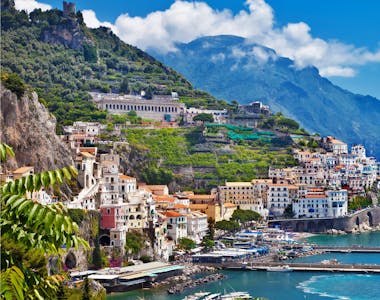

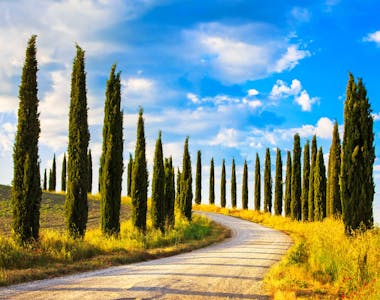
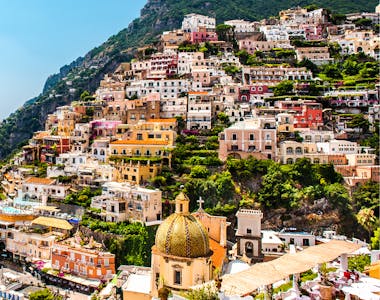
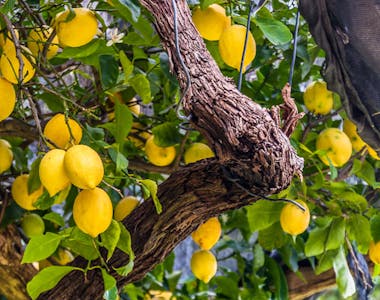
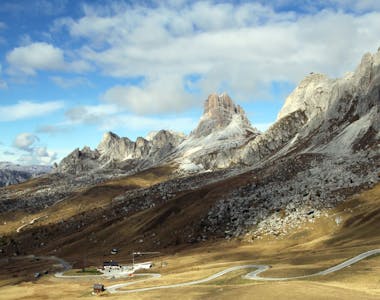
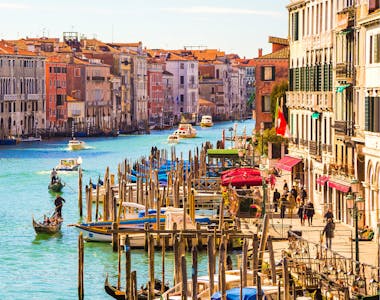
Book With Confidence
Monthly Payments
Spread the costs with no interest or additional fees
Best Price Guarantee
We won't be beaten on price. If you find this adventure at a lower price please get in touch!
Reserve now & pay later
Reserve your adventure today and pay later, free of charge
ATOL protected
Book with confidence
Hold your space today, for free
or book your trip with a deposit and then pay the rest in instalments.
Reserve your flights with us
Add flights to your booking and we'll take care of the rest. You'll get 24/7 support from our team & ATOL protection.
Speak to our experts
Call or email our expert team to find out more and help with ideas and planning.








